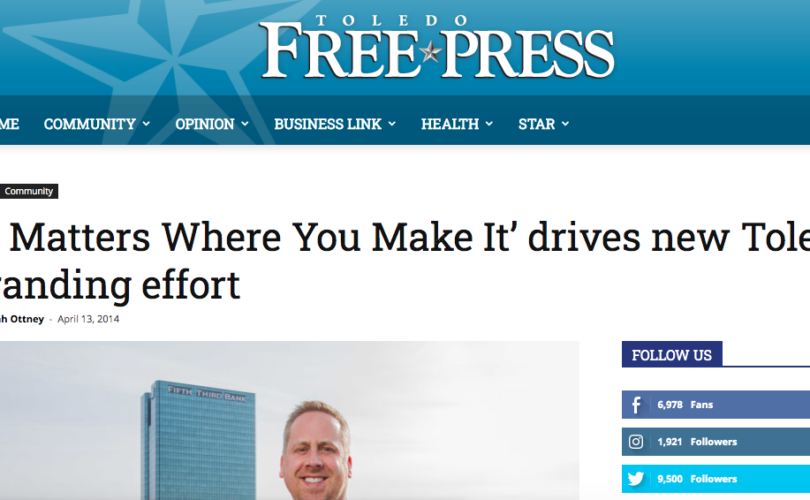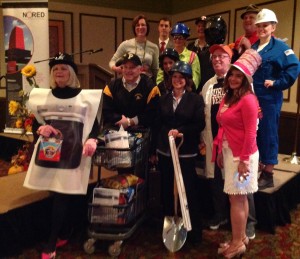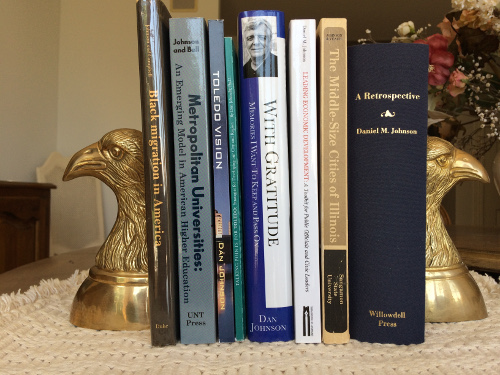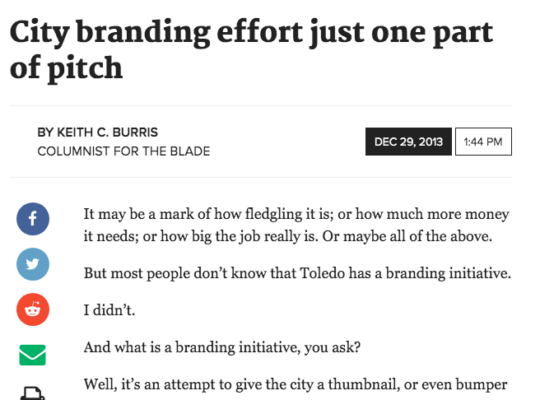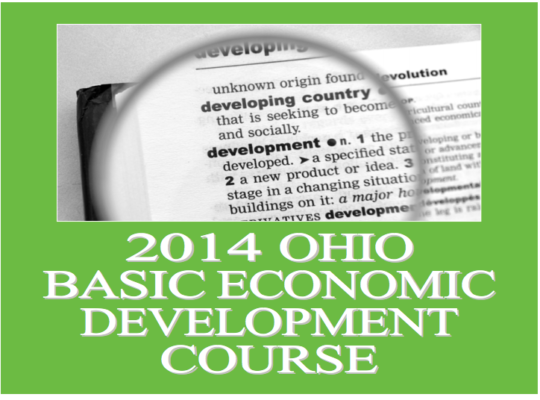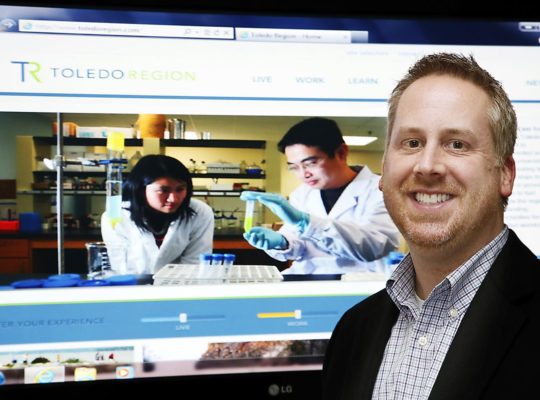April 12, 2014 was the original date for this article on trep.org.
Be sure to read this weekend’s Toledo Free Press cover article: ‘It Matters Where You Make It’ drives new Toledo branding effort. It covers the latest activities and some of the larger issues in the Toledo Region Branding Initiative and has an additional article about what other cities are doing.
An update on the recent activities is very useful, and all of these things we are starting to do is great. Keep going! The article covers some of the larger issues that we need to address as a community as we move forward.
1. Target audience priority. This sentence in the article might get lost, but I think it is very important: “Woodward said he hopes the Toledo Region brand will attract new residents as well as empower lifelong residents to share why they love Northwest Ohio.” I am not sure anyone has even read the original branding guidelines (from Nov 2011). One thing it explains is “target audience”. “Regional entrepreneurs” are the primary target. “Talent” is secondary and “Residents” do not even make the list.
These new efforts reflect a significant change in the target audiences. I think switching to talent as a primary audience and adding residents is a good thing. With limited resources, these priorities are crucial, because I think it is more important to do an awesome job with a very specific audience than it is to spread your resources too thin across many audiences.
But discussing target audiences, assigning resources carefully, and sometimes making hard calls on what NOT to do is a constant, community-wide activity.
2. City branding and regional branding. These new efforts are focused on the City of Toledo, and I think that is OK. There is definitely a huge opportunity to brand the city better for a wide variety of audiences. It is hard to advance the larger whole when the core is not solid.
But city branding messages are different than regional branding messages. The processes you use for regional efforts are different because of the larger number of diverse stakeholders. Related but different.
Clarifying the differences, and the similarities, is important. Again, with limited resources, we will have to make some hard calls, when to invest in city branding, when to invest in regional branding, and when to do both at the same time (which is ideal but a lot harder).
3. Funding, the Council, and how to get the work done. It is not sexy, but the logistics and processes to do the branding work is important.
When I talk to some people, they say no “real money” is needed for any of this branding work: people do it as part of their regular jobs, use social media, get companies to donate their resources, etc. Others say organizations should donate out of the kindness of their hearts, for the greater good. I disagree. There needs to be a business model around it all. Local companies should be begging to contribute to these efforts because they get services that help their companies in return.
Also, the legal organization leading this, the Northwest Ohio Brand Council, needs to be more open about how it works, how to join it, how it is spending money, and how to give input into its processes. Years ago, the council had “committees” where non-council members could volunteer (I was happy to help out that way). Jeff is a great guy and he is doing a helluva lot of great work, but there needs to be a way for many people to be helping him, in a semi-managed way.
The key is designing an extended network of organizations and lean processes to accelerate the work, not get in the way and slow things down. Designing a logo and campaign are sexy; designing the regional branding processes is not. Designing the business model that drives the processes will be the real secret to success.
I hope that as a community, we can work on these 3 larger issues. I am sure there are more (like, it seems like few people actually know the differences between branding, marketing and selling). Perhaps the next step is to figure out how to deal with issues like this at all. Everyone is busy, heads-down doing good things. But we also need to be planning for the longer term and doing things that cause us to lift our heads up and see the bigger picture.

